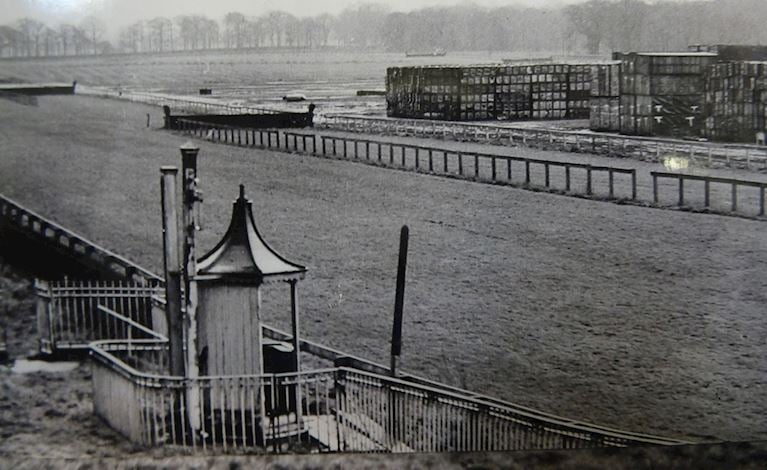Like Aintree, Haydock Park was requisitioned by the military in the immediate aftermath of the Dunkirk evacuation in June 1940.

The first troops to be billeted there were five or six thousand Czech and Polish troops, and these were followed by 68 officers and 1,794 sailors of the French navy, whose ships had been boarded and taken over by the Royal Navy on the fall of France. Most of these men were supporters of the Vichy government, and their lack of discipline and hostility to the British (to say nothing of their ‘chasing the women and girls’ of the district) caused the authorities considerable concern until the majority of them were repatriated to France in November 1940.
For the next couple of years the racecourse was used as a transit camp for various units of the British army, troops being quartered in the stables or in tents out on the course.
From September 1942 the course was used by the US forces as a motor transit depot, which caused considerable damage to the area behind the stands and around the paddock, although the race track itself remained untouched. At the same time some of the land was de-requisitioned and let out to local farmers for growing crops.
In June 1943, as the preparations for D Day the following year began, Haydock was turned into a reception base and repair shop for every conceivable kind of military vehicle from jeeps to Sherman tanks, amphibious landing craft and even gliders. This continued even after the Normandy landings had taken place, and when the war in Europe came to an end on 8 May 1945 considerable numbers of gliders remained on the course; although perfectly serviceable most of these were either scrapped on the spot or sent to Burtonwood for the Americans to dispose of there.
The racecourse company regained possession of the course on 25 December 1945. The race track was reported to be in good condition, but the same could not be said for the stands or the other buildings, and racing was unable to resume until 14 August 1946. In spite of the small number of runners – only nineteen in the first four races - a large crowd turned out, with the Manchester Guardian noting that the course had ‘remarkably recovered from its varied and often violent military occupations’.



